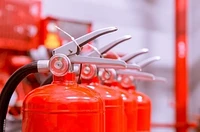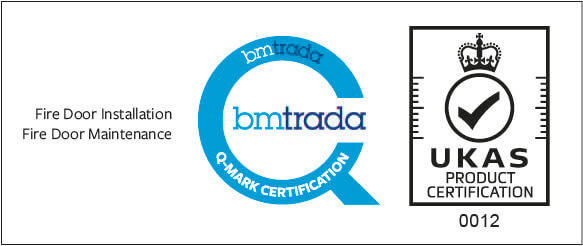Active Fire Protection
In any building, fire safety is crucial, and active fire protection plays an important role in fire safety.
Active Fire Protection (AFP) is a group of systems that require a response or action to detect and extinguish fires. The following article defines what active fire protection is, provides examples of active fire protection in practice and explains its importance.
.webp)
What is Active Fire Protection?
Active fire protection refers to the use of systems and equipment to detect, control, and extinguish fires in a building or structure. These systems require a response, either automatic (such as sprinkler systems) or manual (such as fire extinguishers), to detect and respond to a fire.
Examples of Active Fire Protection
There are numerous examples of active fire protection that can be implemented. Some common examples include:
Fire alarms: Fire alarms are designed to detect the presence of smoke or fire in a building and alert occupants to evacuate. These alarms can be manual or automatic, and they can be connected to a central monitoring system. To find out more about fire alarm systems, click here to visit our active fire protection company, Rosse Systems.
Fire extinguishers: Fire extinguishers are portable devices that can be used to control small fires. They contain chemicals or agents that can extinguish fires, and they are designed to be easily accessible throughout a building. If you require fire extinguishers, click here to visit our active fire protection company, Rosse Systems.
Smoke control systems: Smoke control systems are designed to control the movement of smoke within a building. These systems can be used to keep stairwells and escape routes clear of smoke, allowing occupants to evacuate safely.
Why is Active Fire Protection Important?
Providing crucial support in the case of a fire, active fire protection is highly important for a range of reasons, including:
Protects occupants - The main purpose of active fire protection is to protect the occupants of a building in case of a fire. By alerting occupants to evacuate or extinguishing fires, active fire protection can help prevent injuries and fatalities, keeping occupants safe.
Rapid response - Active fire protection systems are designed to detect and respond to fires quickly. This can help prevent the spread of flames and smoke and limit damage to a building.
Compliance - buildings many legally require active fire protection measures to be in place to fall within compliance. Buildings that don’t meet these requirements may be unsafe and face legal consequences.
Do you require Active Fire Protection? Visit our sister company Rosse Systems
External site link - Do you require Active Fire Protection? Visit our sister company Rosse SystemsIntroducing Passive Fire Protection
While active fire protection refers to the use of systems and equipment to detect, control, and extinguish fires, passive fire protection involves the design and construction features of a building that help prevent the spread of fire and protect occupants in case of a fire. Both are essential in providing protection to buildings and their occupants.
To find out more about passive fire protection, click here.





















